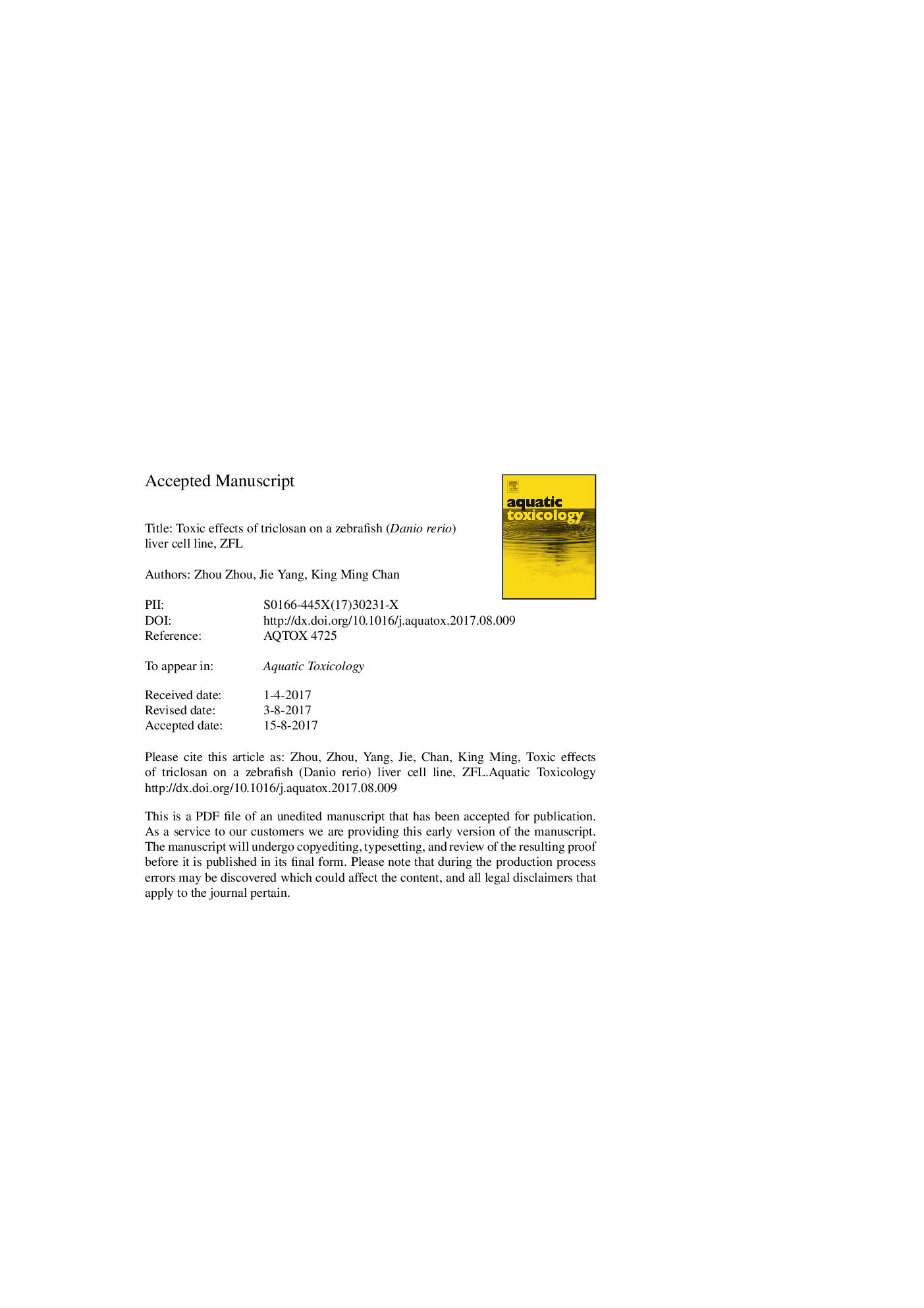| کد مقاله | کد نشریه | سال انتشار | مقاله انگلیسی | نسخه تمام متن |
|---|---|---|---|---|
| 5764105 | 1625914 | 2017 | 38 صفحه PDF | دانلود رایگان |
عنوان انگلیسی مقاله ISI
Toxic effects of triclosan on a zebrafish (Danio rerio) liver cell line, ZFL
دانلود مقاله + سفارش ترجمه
دانلود مقاله ISI انگلیسی
رایگان برای ایرانیان
کلمات کلیدی
موضوعات مرتبط
علوم زیستی و بیوفناوری
علوم کشاورزی و بیولوژیک
علوم آبزیان
پیش نمایش صفحه اول مقاله

چکیده انگلیسی
Triclosan (TCS, 5-chloro-2-(2,4-dichlorophenoxy) phenol) is an antimicrobial agent widely used in personal care products. It has been detected in surface water, soil, aquatic species, and even humans. In this study, we used zebrafish (Danio rerio) as a model to test the hypothesis that TCS exhibits toxic effects by interacting with thyroid hormone receptor β (TRβ) and aryl hydrocarbon receptor (AhR) and by inducing the transcription of thyroid hormone (TH)-associated genes and affecting phase I and phase II enzymes. The median lethal concentrations (LC50) of TCS in zebrafish embryos/larvae and a zebrafish liver cell line (ZFL) were first determined. Hatched larvae were most sensitive to TCS exposure, with LC50 values ranging from 1.26 to 1.46 μM for 96 h after hatching exposure. The major effect of TCS was delayed hatching which occurred from 1.13 μM. The constructed GFP-zfTRβ fusion protein revealed the subcellular location of zfTRβ as the nucleus in both T3-induced and uninduced states, adding to the difficulty of studying TCS action on thyroid hormone receptors in ZFL cells. TCS had neither agonistic nor antagonistic effects on zfTRβLBD or AhR from the reporter gene systems. Ethoxyresorufin-o-deethylase (EROD) assay suggested that TCS is a weak P4501a (Cyp1a) agonist at 5 μM and that it inhibits cytochrome Cyp1a activity induced by benzo(a)pyrene (BaP). In time course-based mRNA profiling in ZFL cells, 4-h exposure to TCS caused a significant (up to 37.5-fold) inhibition of Cyp1a at 2.5 μM. An overall inhibition of liver phase I and II gene transcription at 4 h exposure indicates the possible quick catabolism of TCS. Our findings suggest that TCS is not a TH mimic that affects TH-related gene expression. The impairment of Cyp1a mRNA expression could be due to stimulation by other stressors such as oxidative stress, warranting further investigation into the underlying mechanism in zebrafish.
ناشر
Database: Elsevier - ScienceDirect (ساینس دایرکت)
Journal: Aquatic Toxicology - Volume 191, October 2017, Pages 175-188
Journal: Aquatic Toxicology - Volume 191, October 2017, Pages 175-188
نویسندگان
Zhou Zhou, Jie Yang, King Ming Chan,